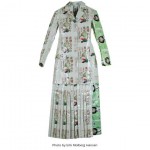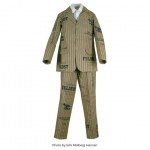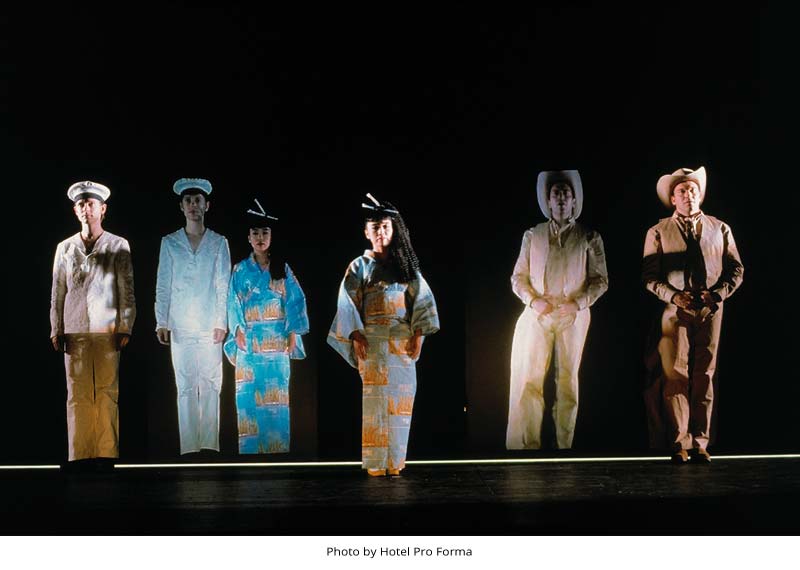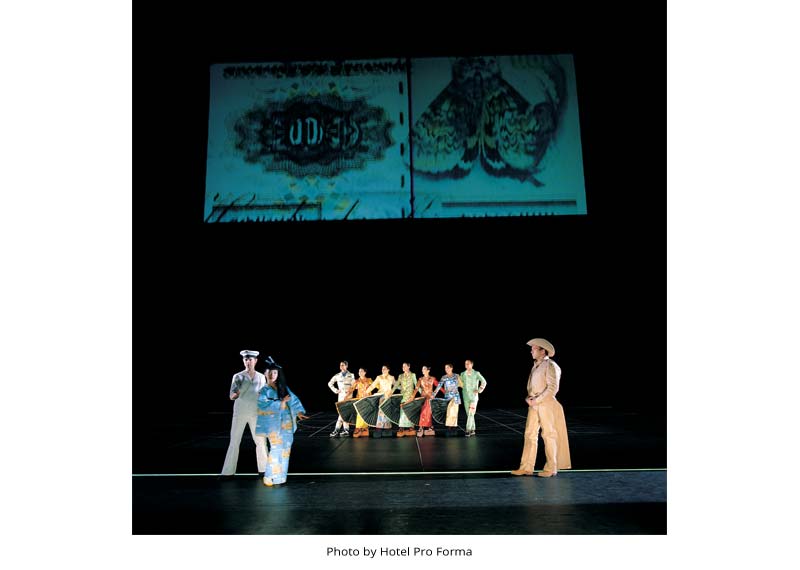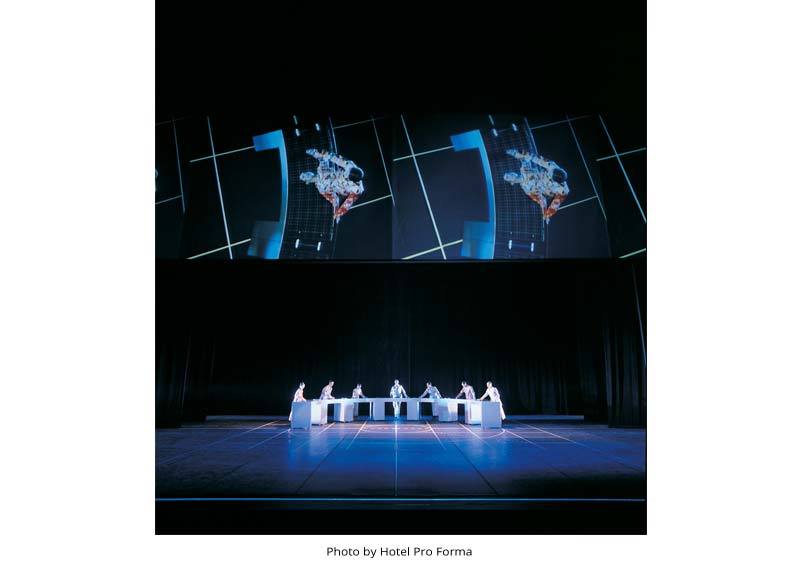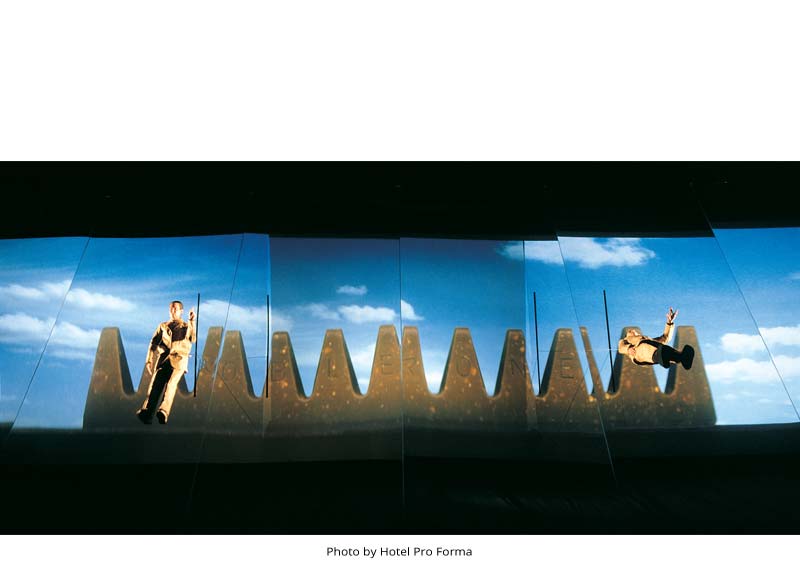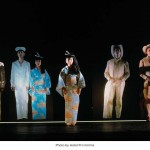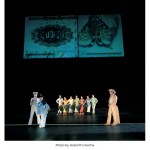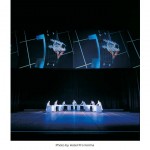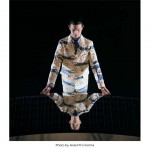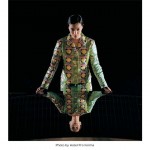Conquering the last remaining bits of planet Earth in this very moment – commercialism and consumerism is our state of mind as well as our condition of life. Let’s buy the strawberry coloured shrimp snacks. Lets eat it. Let’s wear it!
BODYWRAPPInc. – Costumes were designed for the performance “Monkey Business Class” for the Danish theatre group Hotel Pro Forma. The performance was a collaboration between Hotel Pro Forma, the Japanese performance group Dumb Type and the American architects Diller and Scofidio.
Shown here are three suits, two with pleated skirts, one in a Japanese plastic disposable wrapping for Fruit Candy with a miso soup sleeve and one in plastic disposable wrapping for Shrimp Chips with sleeves of Strawberry Candy wrapping. The last, but not least is a business suit in paper made from disposable wrapping for dogs food which looks like a classical pinstripe with a shirt made of a paper Gluten Flour paper packaging. The cuts of the costumes quotes the traditional shapes of western tailoring, like the business suit and pleating skirt.
The costumes are all created from plastic and paper disposable wrappings for consuming products from Asia, Europe and the United States of America. The cuts of the costumes quotes the traditional shapes of Western tailoring, like the business suit, the classical man’s shirt, and pleating skirt.
The art of the performance group is based on visual imagery for a large part. The costumes are therefor an integrated part of the living images on stage. The colour, form and sound of the plastic and paper materials of the costumes played a part, and the fact that the material is a consumer product related the clothing to the theme of mass consumption, dominant in the performance.
About the performance Monkey Business Class
– A performance in memory of money. Monkey Business Class is a musical performance that celebrates money bills with a last farewell before they disappear from our world. Today, electronic currency is beginning to render paper obsolete and assets sweep across borders as digital codes. After plastic cards and pin codes we return to the body with a new code language: Biometrical access control systems – the future gateway to wealth. The print of a finger, the recognition of a voice and the scanning of an eye give the answer to the machine that asks the question: Are you who you say you are? Human capital acquires a new meaning, and manual work as an expression of work and survival is replaced. Simultaneously, money bills are treated as icons, and as visual arts they become collector’s items.
– A performance in memory of the musical. Formally, the performance takes its point of departure in the 1930s American film musicals with their catchy songs, moral stories and extravagant dance scenes. Three singers at the front of the stage represent the music and the love story. Seven dancers at the middle of the stage represent the dance and the masses as a visual chorus. Two actors at the back of the stage represent the moral. They are the monkeys in a play of six parts. The music originates in Japanese, Danish and American popular songs from the 1930s and 40s, but as contemporary compositions the sound bears little resemblance to the original tunes. The songs are performed live by a Japanese, a Danish and an American singer. The dances turn into collective scenery with individual breakaways that reflect the particular characteristics of the Japanese and Danish dancers. The actors appear as virtuous monkeys and recite texts from Everyman, a medieval morality play.
– A performance in memory of the senses. The scenography is seen as an ambiguous architectural landscape. As a challenge to the visual perception of the eye it unfolds like cinematic and visual art at a two- and three-dimensional level. Through video projections and changing lights, the eye transforms scenic space and the positioning of the performers. Live recordings of the stage action projected on to a screen transform the basic principles of horizontal and vertical perceptions.
Text ‘Monkey Business Class’ by Hotel Pro Forma



